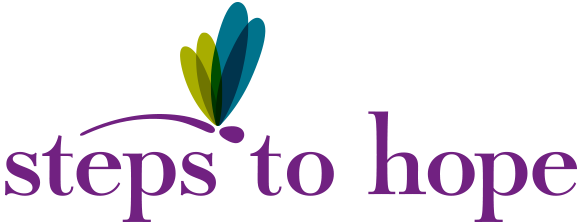APRIL IS SEXUAL ASSAULT AWARENESS MONTH
It's April already! This is when we first start getting a glimpse of what Spring and Summer are going to be like. It warms up, things start turning green, and the days are longer.
April is a time of new beginnings, growth, life and color. But it is also Sexual Assault Awareness Month. This is a month where we make it a point to let our friends, family, and community know that we are here for them. We believe them. We will fight for them. During such a happy season it is hard to believe that the world can be such a dark and scary place where sexual assault happens, but it does.
EVERY 73 SECONDS SOMEONE IN THE UNITED STATES IS SEXUALLY ASSAULTED.
54% OF SEXUAL ASSAULT VICTIMS ARE BETWEEN THE AGES OF 18-34.
1 OUT OF EVERY 6 WOMEN HAS BEEN THE VICTIM OF AN ATTEMPTED OR COMPLETED RAPE IN HER LIFETIME.
These statistics are unthinkable. They are unbelievable. They are true.
So what does that mean for us? What can we do to help? Where do we even begin?
For the month of April we are going to look at what we can do to stay safe, how to protect others and online safety.
First off what is consent and what does it look like?
While the legal definitions of consent may vary by location and circumstance, the general concept is always the same: Consent is an ongoing process of discussing boundaries and what you’re comfortable with. Let’s get specific about how consent plays out in real life.
What is consent?
Consent is an agreement between participants to engage in sexual activity. Consent should be clearly and freely communicated. A verbal and affirmative expression of consent can help both you and your partner to understand and respect each other’s boundaries.
Consent cannot be given by individuals who are underage, intoxicated or incapacitated by drugs or alcohol, or asleep or unconscious. If someone agrees to an activity under pressure of intimidation or threat, that isn’t considered consent because it was not given freely. Unequal power dynamics, such as engaging in sexual activity with an employee or student, also mean that consent cannot be freely given.
How does consent work?
When you’re engaging in sexual activity, consent is about communication. And it should happen every time for every type of activity. Consenting to one activity, one time, does not mean someone gives consent for other activities or for the same activity on other occasions. For example, agreeing to kiss someone doesn’t give that person permission to remove your clothes. Having sex with someone in the past doesn’t give that person permission to have sex with you again in the future. It’s important to discuss boundaries and expectations with your partner prior to engaging in any sexual behavior.
You can change your mind at any time.
You can withdraw consent at any point if you feel uncomfortable. One way to do this is to clearly communicate to your partner that you are no longer comfortable with this activity and wish to stop. Withdrawing consent can sometimes be challenging or difficult to do verbally, so non-verbal cues can also be used to convey this. The best way to ensure that all parties are comfortable with any sexual activity is to talk about it, check in periodically, and make sure everyone involved consents before escalating or changing activities.
What is enthusiastic consent?
Enthusiastic consent is a newer model for understanding consent that focuses on a positive expression of consent. Simply put, enthusiastic consent means looking for the presence of a “yes” rather than the absence of a “no.” Enthusiastic consent can be expressed verbally or through nonverbal cues, such as positive body language like smiling, maintaining eye contact, and nodding. These cues alone do not necessarily represent consent, but they are additional details that may reflect consent. It is necessary, however, to still seek verbal confirmation. The important part of consent, enthusiastic or otherwise, is checking in with your partner regularly to make sure that they are still on the same page.
Enthusiastic consent can look like this:
Asking permission before you change the type or degree of sexual activity with phrases like “Is this OK?”
Confirming that there is reciprocal interest before initiating any physical touch.
Letting your partner know that you can stop at any time.
Periodically checking in with your partner, such as asking “Is this still okay?”
Providing positive feedback when you’re comfortable with an activity.
Explicitly agreeing to certain activities, either by saying “yes” or another affirmative statement, like “I’m open to trying.”
Using physical cues to let the other person know you’re comfortable taking things to the next level (see note below).
Note: Physiological responses like an erection, lubrication, arousal, or orgasm are involuntary, meaning your body might react one way even when you are not consenting to the activity. Sometimes perpetrators will use the fact that these physiological responses occur to maintain secrecy or minimize a survivor's experience by using phrases such as, "You know you liked it." In no way does a physiological response mean that you consented to what happened. If you have been sexually abused or assaulted, it is not your fault.
Consent does NOT look like this:
Refusing to acknowledge “no”
A partner who is disengaged, nonresponsive, or visibly upset
Assuming that wearing certain clothes, flirting, or kissing is an invitation for anything more
Someone being under the legal age of consent, as defined by the state
Someone being incapacitated because of drugs or alcohol Pressuring someone into sexual activity by using fear or intimidation
Assuming you have permission to engage in a sexual act because you’ve done it in the past
For more information of sexual assault you can look up https://www.rainn.org/safety-prevention.

